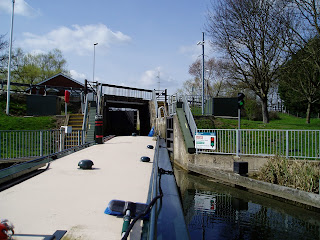

We have finally completed installing the twin bunks and refitting the carpet round them.
They look very smart and will provide seating for up to 6 people (round a removable dining table for meals), twin single beds or a 4 ft 6in wide double bed. There is also a lot of useful storage space underneath them. As well as providing more accommodation, we think they greatly enhance the appearance of the forward saloon, which looks much less cluttered.
They are designed to be freestanding, so that they only need to be screwed down to the floor and not the walls, and are constructed from 18 mm hardwood-veneered marine ply on a softwood frame. The ply has had three coats of Ronseal gloss medium oak varnish, which blends in very well with Patience's existing interior woodwork. The total cost, including the upholstery (from Whalin Upholstery) has been about £850.
Photos by John






